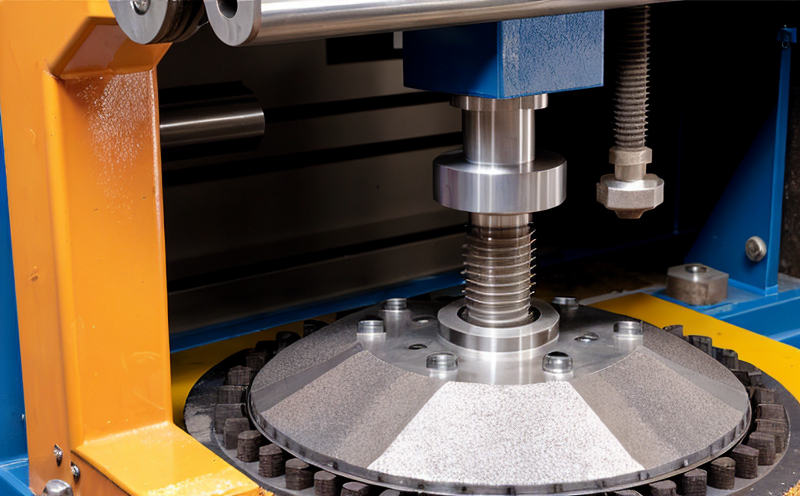DIN EN 60068-2-6 Vibration Endurance Test
The DIN EN 60068-2-6 vibration endurance test is a critical procedure used to evaluate the structural integrity and mechanical reliability of HVAC (Heating, Ventilation, and Air Conditioning) equipment under controlled vibration conditions. This standard ensures that the equipment can withstand the dynamic forces it may encounter during installation, operation, or transport. The test simulates real-world scenarios where components are subjected to various types of vibrations, such as those caused by machinery in close proximity or environmental factors like earthquakes.
The primary objective of this test is to determine whether the equipment will continue to function correctly after exposure to specified levels and durations of vibration. Compliance with DIN EN 60068-2-6 is essential for manufacturers aiming to ensure their products meet international quality standards, thereby enhancing customer confidence and reducing warranty claims.
The testing process involves subjecting the HVAC unit or its components to a series of sine wave vibrations along one axis (usually the x-axis). The test can be conducted in different frequency ranges depending on the specific requirements of the equipment. For instance, frequencies between 10 Hz and 2 kHz are common for simulating transportation or operational conditions.
Preparation of the specimen is crucial before commencing the test. This includes ensuring that all connections are secure and that any internal components are positioned correctly within the unit. The sample should be representative of the actual product to ensure accurate results. During testing, sensors are attached to key areas of the equipment to monitor displacement, acceleration, and other parameters.
Instrumentation plays a vital role in carrying out this test accurately. High-precision accelerometers are used to measure the vibration levels experienced by the specimen. Data acquisition systems collect these measurements continuously throughout the test duration. Software tools process this raw data, providing insights into how well the equipment performs under challenging conditions.
After completing the test cycle, detailed reports are generated summarizing the performance of each component during exposure to vibrations. These reports typically include graphs depicting changes in various parameters over time and comparisons against acceptable limits specified by DIN EN 60068-2-6. Compliance with these standards indicates that the equipment has successfully passed the vibration endurance test.
Non-compliance might indicate potential weaknesses in design or manufacturing processes, prompting further investigation to identify root causes. By adhering strictly to this international standard, manufacturers can enhance their reputation for producing high-quality HVAC solutions capable of enduring harsh environments without compromising performance.
Why Choose This Test
Selecting the DIN EN 60068-2-6 vibration endurance test offers numerous advantages that are particularly beneficial for quality managers, compliance officers, R&D engineers, and procurement professionals involved in HVAC equipment development. Here’s why choosing this specific test is advantageous:
- Enhanced Product Reliability: Ensures that the equipment can withstand environmental stresses without failure.
- International Compliance: Meets global standards recognized across Europe and beyond, promoting market access.
- Risk Reduction: Identifies design flaws early in development stages, minimizing costly recalls post-launch.
- Customer Satisfaction: Delivers products that meet or exceed expectations, fostering loyalty among end users.
- Competitive Edge: Demonstrates commitment to excellence, setting your brand apart from competitors.
- Data-Driven Decision Making: Provides robust data supporting decisions about future product improvements and modifications.
In summary, incorporating the DIN EN 60068-2-6 vibration endurance test into your quality assurance process not only strengthens your products but also enhances overall business competitiveness.
Customer Impact and Satisfaction
The implementation of DIN EN 60068-2-6 has a profound impact on both customers and end users, ensuring higher levels of satisfaction and reliability. When HVAC equipment undergoes rigorous vibration testing according to this standard, it translates into several tangible benefits:
- Better Durability: Equipment designed to withstand severe vibrations lasts longer, reducing maintenance costs over time.
- Increased Efficiency: Tests help pinpoint areas needing improvement, leading to more efficient designs that save energy.
- Fault Detection Early: Issues can be identified early in the development phase, preventing costly mistakes later on.
- Enhanced Reputation: Consistently meeting international standards enhances brand reputation and trustworthiness among consumers.
- Peace of Mind for Users: Knowing that their HVAC systems are built to last provides users with confidence in purchasing decisions.
- Improved Safety Standards: Properly tested equipment reduces risks associated with malfunctions or failures during critical operations.
By prioritizing compliance with DIN EN 60068-2-6, businesses ensure they deliver reliable products that meet the highest industry standards. This focus on quality ultimately leads to increased customer satisfaction and loyalty.
Use Cases and Application Examples
- Data Centers: Ensuring robust HVAC systems capable of maintaining optimal temperatures despite external vibrations from nearby machinery or ground movements.
- Airports: Testing ventilation units to withstand the constant vibration caused by aircraft engine noise and runway activity.
- Offshore Platforms: Evaluating air conditioning systems designed for platforms subject to marine environments characterized by varying wind speeds and sea state-induced vibrations.
- Manufacturing Plants: Verifying that chillers and compressors installed in areas with high levels of industrial equipment-generated vibrations will operate reliably over extended periods.
- Hospitals: Guaranteeing the stability and performance of HVAC units critical for maintaining clean air quality in patient rooms, operating theaters, and other sensitive areas.
- Residential Buildings: Assessing home comfort systems installed in locations prone to natural disasters like earthquakes or tornadoes.
In conclusion, DIN EN 60068-2-6 plays a crucial role in ensuring the mechanical reliability and vibration resistance of HVAC equipment. By incorporating this test into your quality assurance protocols, you enhance product durability, improve customer satisfaction, and establish credibility within the industry.





